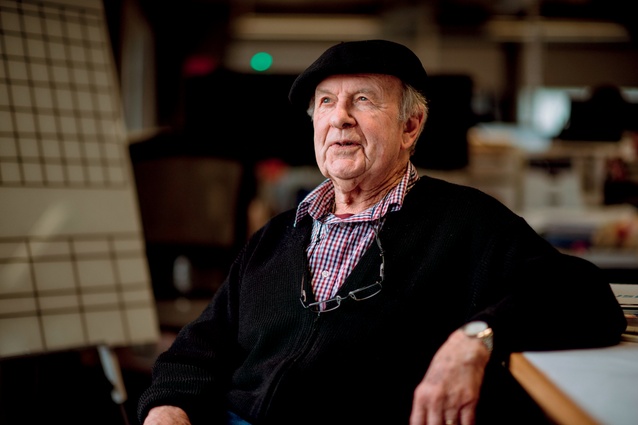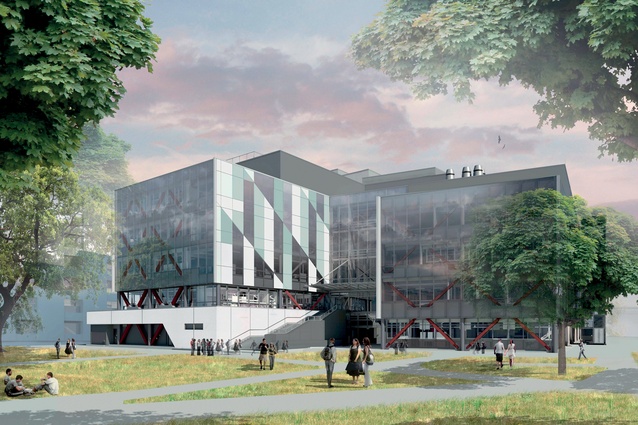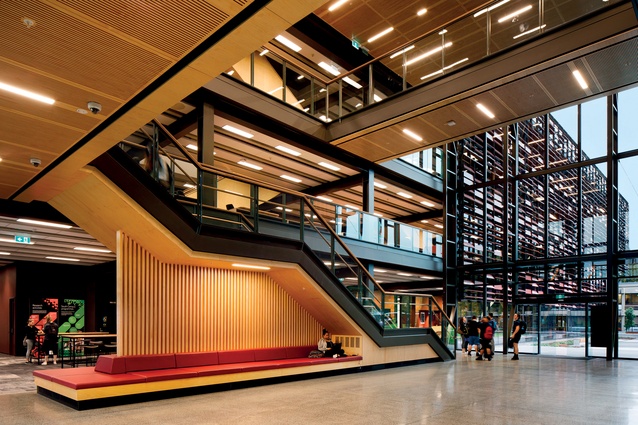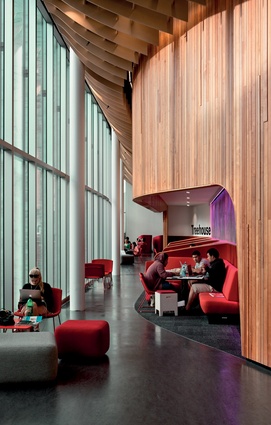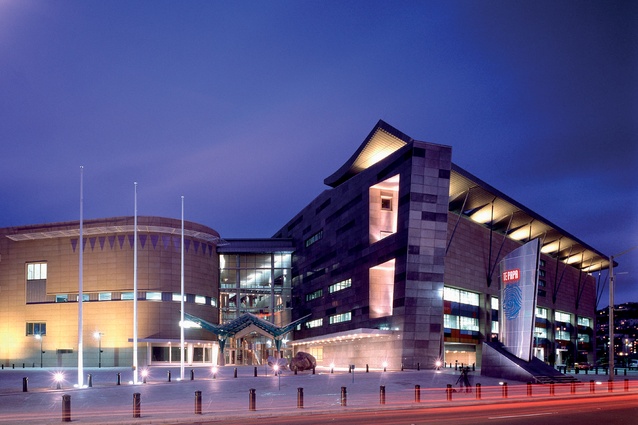Jim Foote: a life’s work
With 69 years of practice under his belt, 90-year-old Jim Foote is a well-loved and long-serving member of staff at Jasmax. He joined the firm in 1979 and, nearly 40 years later, still works a three-day week. Justine Harvey spoke to Foote about his life and work to date.
Justine Harvey: When did you start on your architectural journey?
Jim Foote: I started in 1944 when I went to university at age 16. I was registered in 1948.
JH: Had you always wanted to be an architect?
JF: I was very much influenced by the art master at Auckland Grammar called Freddy Beckett. He used to bring architectural drawings to school and they fascinated me. Freddy was an amazing draftsman and very skilled with colour. He was the main reason why, having always been fond of drawing, I thought architecture would be a natural thing to do. My father didn’t think so though!
I started studying part-time as I was advised to get practical office experience and to join the full-time course later. At that time, there was a big influx of returned servicemen on rehab bursaries and they had quite different outlooks; they had lost four years of their working lives. They were far more responsible than the callow youths who had come straight from school.
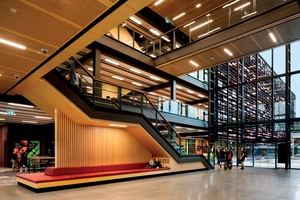
JH: Were there any women in the group?
JF: Yes, I think there were three in our year and that was considered quite a few.
JH: How did it work in terms of registration back then?
JF: There was the feeling you weren’t an architect until you were registered. This year, I have elected to be on voluntary suspension because I couldn’t produce enough tangible evidence to the registration board to show that I was experienced!
JH: On becoming 90, you would think you’d have enough experience! Where was your first practice?
JF: I went to England after studying and I was in London for two-and-a-half years. It was easy to get work there. There was a huge amount of building happening and the Festival of Britain was on in 1951, so a great many architects were engaged on working on the festival site. I worked on a restaurant under Waterloo Bridge for Maxwell Fry; I worked in his office for a short time.
JH: London must have been a crazy place back then.
JF: There were buildings with the sides blown off; you could look right into empty rooms. It was only five years after the war. Our office designed some flats in Paddington on a completely flattened site. Those buildings were rushed up quickly with load-bearing brick, no insulation and they were very primitive. One of the problems was that builders could never get their money quickly because you couldn’t say a building was finished until the inside was painted, but the paint on the brickwork wouldn’t dry!
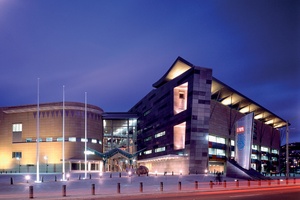
JH: What brought you home to New Zealand?
JF: My father died while I was away, but I would have come back anyway. My first job at home was working for Malcolm McKenzie, who had been commissioned to design St Kentigern’s College. Subsequently, he was invited to join Joseph Osborne Owen, who became our senior partner because he had been commissioned to draw Sacred Heart College; so I went into partnership with the two of them in 1953 (J.O. Owen McKenzie and Foote). We stayed together for about 10 years until Joseph Owen retired. I moved off and formed another partnership with Jim Stewart. We had a small practice for about 10 years.
JH: What projects were you designing at J.O. Owen McKenzie and Foote?
JF: The major one was the Holy Trinity Cathedral (Parnell). There had been an international competition for it in 1938 but with the advent of the war it was abandoned. There was a bequest for the building – so, after the war, in the early ‘50s, it began again, although they only had enough money to build the chancel. It was built in pre-cast concrete and the technology was not familiar at that stage, but we found a little company in Penrose that did it. Malcolm McKenzie detailed the brickwork. The way the bricks were manipulated was very impressive.
JH: After your second practice, did you come straight to Jasmax?

JF: It was JASMaD then. The notion of being in JASMaD appealed to me as I liked the work they were doing and knew a number of the people. We did a string of hotels, including the Rotorua Hyatt Kingsgate. It was interesting work for someone who had been doing tiny things. I remember on my first day, I thought to myself: ‘what have we done, boy?’ – because I was abandoning my own practice and going to a huge office. But it was the best thing I had done in my life – wonderful work and a great family culture that has remained intact despite the company’s growth.
JH: What changes have you seen since the 1940s?
JF: We were still drawing on linen for any building that was deemed important. It was waxed blue linen and you drew on it with a pen. If you made a boo-boo it was beyond redemption, so you took it home to your mum and she boiled it up in the copper and the wax melted and you had fine linen that could be used for hankies. We didn’t have a plan printer at first – so, if you had a drawing to be copied, you took it up the road to an old building in Wyndham Street. It was the same with specifications; you had to take them to a typist.
JH: Any other technologies that changed dramatically?
JF: When we bought our first computers, there were a couple of them in a locked room and two computer technicians were hired to convert our drawings into CAD drawings. Computers just amaze me when you see how you can do one little drawing and transform it into 3D and rotate it around; it’s such a great thing for the design – to be able to see it from every angle. Nothing really replaces the pencil and the paper for detailing, though – that hand-to-eye-to-paper connection.
JH: Tell us the story about you meeting Frank Lloyd Wright!
JF: I always refer to 1951 as the year in which I almost met Frank Lloyd Wright. He was invited to London to present awards to the Architecture Association School in Bedford Square. They had a reception and a dinner in which he was the principal speaker. A friend and I arrived at the function a little late and we couldn’t find anywhere to sit, so we prowled around and made ourselves comfortable in the corner of an empty room.

We were having a drink and, presently, there was a commotion and the president and Frank Lloyd Wright came in, followed by Wright’s wife. I always remember the magnetism that followed that man; it was quite phenomenal. He sat down 10 to 12 feet away from us. No one seemed to care we were there. We had eyes on stalks!
The president, being a dutiful host, leaned over to Wright’s wife and said, “Can I get you a drink?” And before she could answer, a voice booms out, “You can get me a drink!” And all through the president’s introduction at the dinner, there was this string of one-liners. They had taken him through the Festival Hall that day and he was expected to make some kind of comment about what he thought of the place and he said, “Well, you boys may just have something there.”
JH: Why are you still working?
JF: They reckon architects don’t retire. I like what I do. Everyone in the office is younger than me, and the fact that one is mixing with younger people on a day-to-day basis is refreshing, stimulating and the complete opposite to what living in a retirement village would be like.
JH: What’s the long-term plan? Where do you want to be in five years time?
JF: (Laughs). Staying alive would be a good option. I’d like to continue as long as I can manage.

